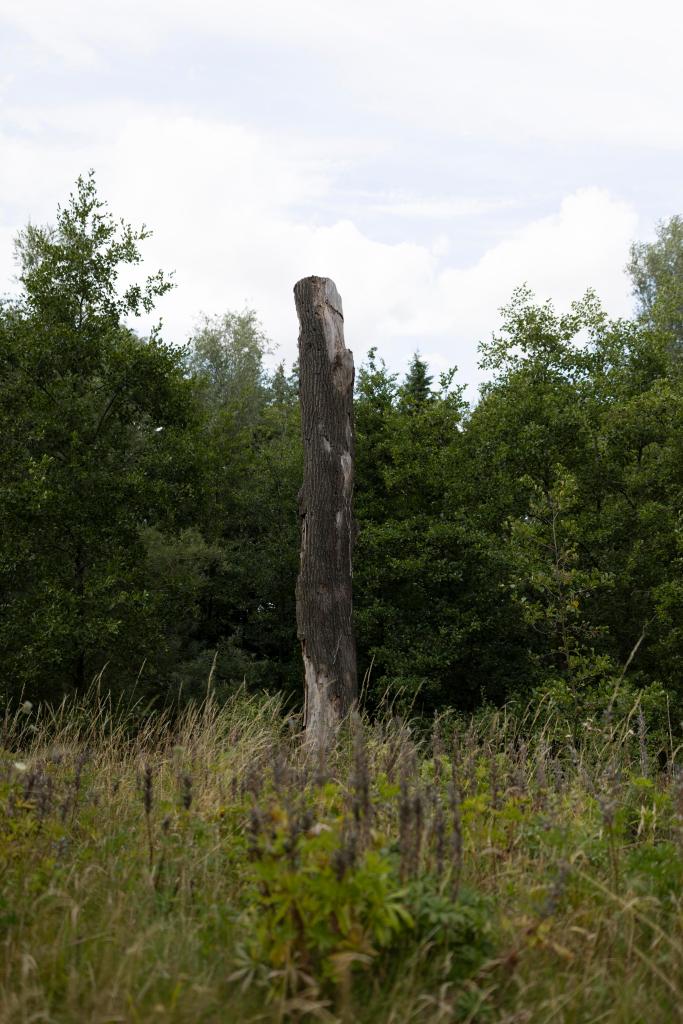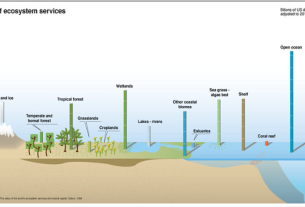|
Getting your Trinity Audio player ready...
|

Welcome to the January Art Gallery. This month we are excited to feature found objects, video art, AI, linocuts, watercolours, immersive installation, collage and photography. Our artists are Jitka Klimešová, Jenny Jih, Sanji Yang, Pocoyo, Neal Haddaway, Annette Raffan, Iris Hill and Shengdi Cui.
Shengdi Cui
This art project focuses on exploring the small and wonderful details of nature, turning the lens on one of the often overlooked protagonists of everyday life – fungi. Through in-depth observation of the subtle parts of fungi, we try to arouse viewers’ fresh understanding of the things around them.
This series of photographs captures the delicate textures, colour gradations and morphological changes of fungi from a microscopic perspective. Each photo is an adventure, revealing the unique beauty of tiny lives that we often overlook.
Follow Shengdi @shengdi_cui
Annette Raffan


Pre-PhD, I had a unique combination of jobs by today’s standards; part-time research technician, full-time mum, and part-time postage stamp dealer. Whilst the first two were my priority, the last provided me with many moments of pleasure. Part of my business model was to create hand-decorated envelopes with co-ordinating stamps, strongly inspired by my love of nature and science. But on starting my PhD, I had to prioritise, and the business was put on hold.
It was in a rare moment of me-time in September, when the University of Aberdeen Special Collections hosted a cupcakes and collage afternoon with some local artists, that I re-connected with my love of working with paper. I spent a good couple of hours tearing and cutting away at images of specimens held in the university’s archives. I was determined to represent my entire PhD – plant species interactions and their influence on soil structure – on one piece of card.
Aboveground I wanted to show the diversity of life we see and the plant structure which facilitates it. But I particularly wanted to show how everything we build is rooted in the soil; a classic print turned upside down was perfect for this. I also wanted to highlight the diversity of roots, the complexity of soil and the value soil holds. I finished it with a cut-out from an old specimen labelling tag; ‘perishable’. I think that alone says it all.

This collage was produced at the University of Aberdeen’s collage and cupcakes afternoon. I think I will be using this as my PhD thesis cover! The previous two images are Instagram posts which were inspired by ecology, but also design and co-ordination of the postage stamps with my envelopes.
Follow Annette at: www.knowledgeecology.me, X: annetteraffan and @thepostedstamp/
Jenny Jih, Sanji Yang and Pocoyo
Title: MycoDea (2023)
MycoDea is a fusion of techno-religious elements, embraces found objects and natural materials, intertwining with AI-generated moving images and interactive sounds. This immersive installation delves into the realms of beliefs, fantasies, symbiosis, and the sensory experiences inspired by the mystical fungal world.
PART I
MycoDea takes on the experimental task of digitally preserving found mushrooms, bestowing upon them a virtual immortality. Drawing research from rich folklore and ancient mushroom rituals, the four AI fungal fairies emerge as divine guides and lead participants through a contemplative ritual.
PART II
The interactive Bare Conductive Touch Board becomes a conduit for playful connections between humans and the non-human entities. It evokes field recording sounds from the woodland and weaves an intricate tapestry of imaginary mycelial languages, inviting participants to engage in a sensorial dialogue with the living artwork.


We utilise found natural objects and mushrooms from the forest to create the installation. Through corroding recycled foam boards, we attempted to mimic the appearance of mycelium, to serve as a projection background. The moving images and sounds are generated with AI technologies, incorporating footage and field recording sounds collected in the forest. Finally, we connect the mushrooms with Bare Conductive Touch Boards to provide sound interactive experiences for the audience.
Click on the video to watch, two stills from the video art are above. The artists are from China and Taiwan and met and collaborated in the UK. Follow their joint and individual projects on their Instagrams: Jenny Jih @jennyjihh , Sanji Yang @3anj1_y and Pocoyo @_noblueberriesss
Neal Haddaway
Title: Gnost – algia: The Pain of Knowing
This project combines trees as a visual metaphor for connection with place and nature with untranslatable words as a metaphor for the universal experience and the importance of minority and Indigenous cultures in the fight against the planetary crisis. I spent the summer of 2023 living in forests across Europe, communing with nature to examine what can be learned from trees. I then performed a thematic analysis of the imagery made, clustering images with untranslatable words that conveyed the meanings of the images.
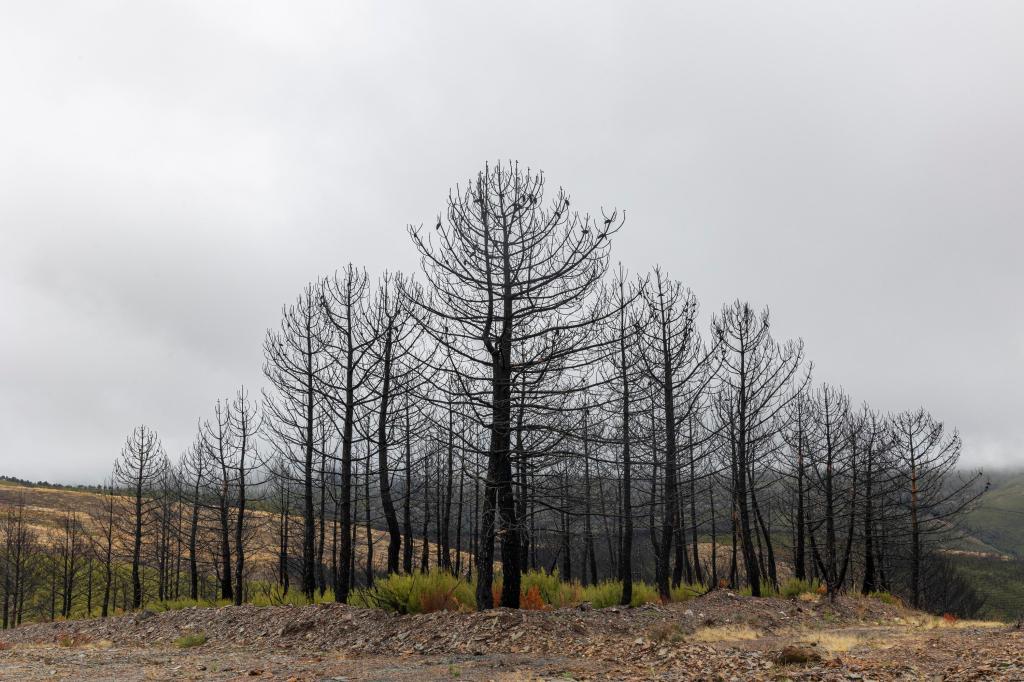

More about Gnost – algia: the pain of knowing: According to the U.N. Secretary-General António Guterres, “climate breakdown has begun”, and the scientific community agrees that we now face “a systemic, existential threat”. In 2023, we experienced seemingly unending climate records: the lowest level of Antarctic sea ice in January; a heatwave in the Antarctic of 39°C in March, the highest temperature anomaly ever recorded; global surface air temperatures 1.5 °C above pre-industrial levels in June; Florida sea temperatures of an unprecedented 38.4 °C in July, indicating an extremely high likelihood of extensive coral mortality; a heat index of 70 °C in coastal Iran in August. As we forge ahead-long into a climate emergency, those of us who know what is coming are increasingly affected by climate emotions, also referred to as climate anxiety. For some people, anger can be motivating, whilst others can become paralysed into inaction. Grief and hope are typically opposing emotions, but acknowledging their duality and accepting the existence of both simultaneously is an important mechanism for processing our emotions and finding solace as we face the worsening planetary crises.
Gnost · algia: The Pain of Knowing explores what it means to know what is coming in an age of climate breakdown. It offers catharsis by sharing of climate anxiety, naming our emotions, and understanding of the universality of the human experience – that we are not alone in our feelings and what we feel has been experienced before. Explore Neal’s work further at: https://nealhaddaway.com/gnost-algia
Follow Neal @nealhaddaway.photography/
Jitka Klimešová
Title: Plant Belowground Organs
I study unseen worlds belowground and plant organs to understand plant clonality, regeneration after disturbance or after seasonal rest. To document traits on those belowground organs I am drawing each of them. I now have collection of thousands of drawings of plant belowground organs from Europe and North America. I am storing this data about belowground traits in CLO-PLA database that is freely available for other ecologists. I reflect on this research in my art, including linocuts.


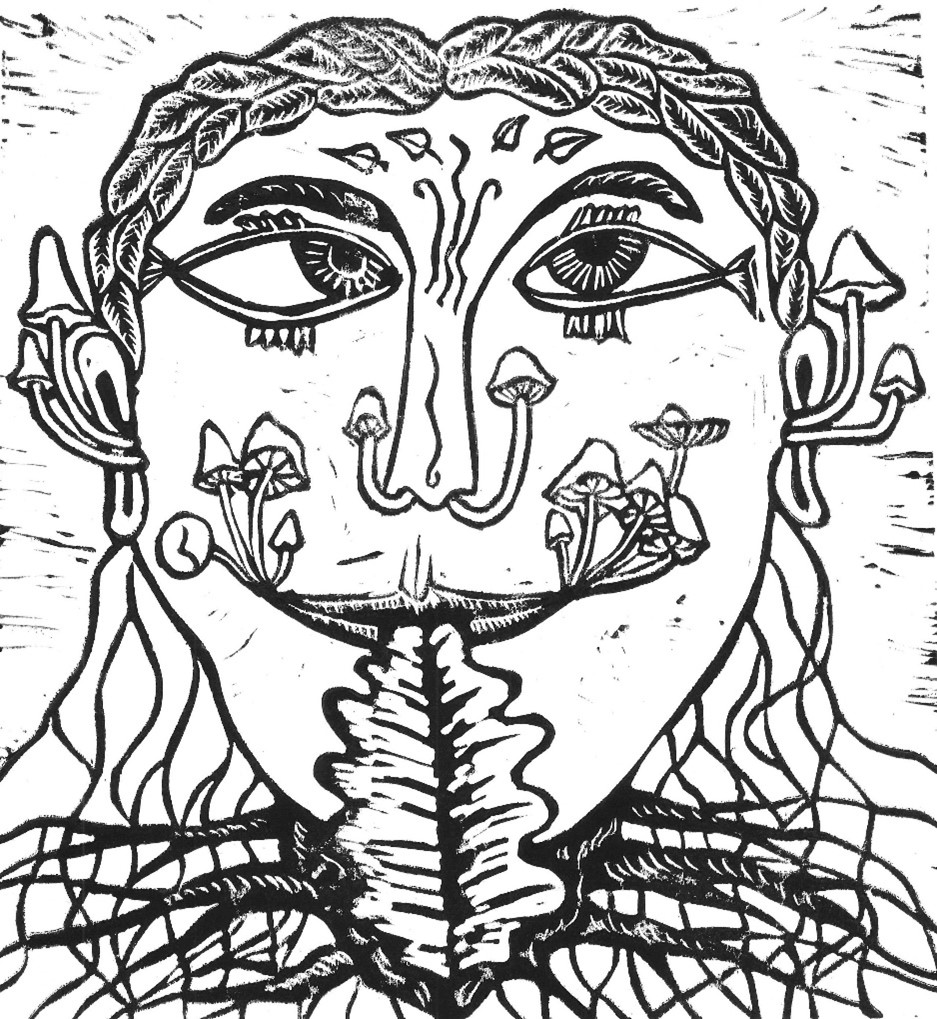
Belowground are plant roots and other storage and clonal organs, there are also friends and foes such as fungi. It is even more difficult to see them than roots, so they remain mysterious.
Follow Jitka Klimešová (X): @Jitka_Klimesova or via the Institute of Botany, Czech Academy of Sciences, CZ.
Iris Hill
Title: Fragile Nature.
Fragile Nature is a collection of work that shares her journey as Plantlife’s first Artist in Residence. Iris Hill is a watercolour artist, inspired by the natural world. Exploring rare wildflower species on the edge of extinction, her work balances beauty and meaning, presence and reflection.

Inspired by rare species Pheasant’s Eye
I adore wildflowers: they represent the yin and yang of being wild and free, strong yet delicate, many with the superhero ability to rise through rubble. Here now, but perhaps not for much longer. A wildflower experiences growth and decay in a thimble of time. Growing in discomfort to ensure survival, thriving on the edge of things, whether a cliff, roadside or the grill of a drain. They find expanse in the smallest of gaps, holding space with authority. Amongst wildflowers I am raw, my honest self. Nature welcomes you as you are, inviting you to be part of the purposeful chaos. The tangles of brambles, the reaching frond of a fern express belonging. A wildflower on the brink of extinction communicates another energy, a mix of hope and despair. The fragility of these plants represent the impermanence of life. As I experiment with natural pigments, I am aware that the ink won’t necessarily last. The colours will fade and change – the image I first poured onto the paper won’t be the one that sits there after the passage of time, to me this transition is where the magic is.
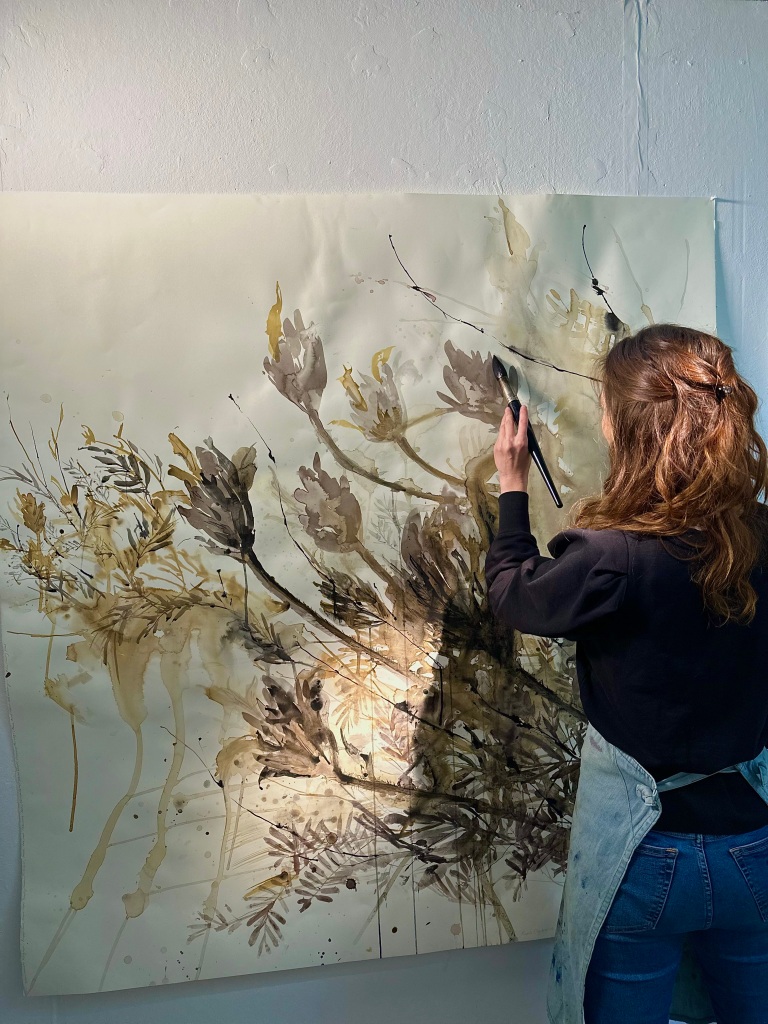
This bright and striking flower is one of Scotland’s rarest wild plants. It grows in two very different areas: on high mountain ledges in Europe and the UK, on the coast in northern Scotland. I met Purple Oxtropis on the coast in northern Scotland, where, in some special locations lots of plants grow on the cliffs and sand dunes. In the best spots the cliff tops and ledges are fringed by the bright, cheerful blooms in June and July. They grow in tufts, with grey-green leaves covered in silky hairs, and distinctive, rich purple flowers in clusters. The seeds grow in pods after the flowers fade since the plant is related to peas, clover, and vetches.

To read more about Lisa Gardner’s botanical art journey of Plantlife’s reserves visit: www.plantlife.org.uk/a-botanical-art-journey-of-plantlifes-reserves/
Follow Iris Hill at www.irishill.co.uk and @irishill. Lisa Gardner works under her Nan’s name Iris Hill as a tribute to her.
Thank you to all our artists! To send in art for our next Art Gallery post, check out our call out for more info: https://jecologyblog.com/2023/11/10/calling-all-aesthetic-activists/



